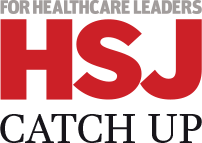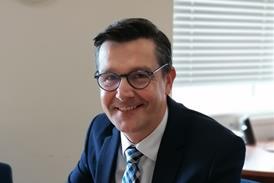David Loughton explains how new productivity methodologies are aiming to improve Royal Wolverhampton Hospitals Trust’s patient and staff experience, and save over £2m per annum.
At the Royal Wolverhampton Hospitals Trust we have always focused on continuously improving patient experience and outcomes, but two years ago we realised we had a few long-standing “pain points” that needed to be overcome.
It was doubly important that these issues were tackled in light of the RWHT’s long term objective to become a foundation trust.
However, due to ever-increasing demand in certain departments we were spending a lot of money on outsourcing to plug gaps, and that was costing us significant amounts of budget without ever actually dealing with the root cause of the problem.
We needed to break that cycle somehow and find a fresh approach to the way we went about delivering our services.
Rather than try to effect a wide-ranging programme immediately we decided to test the water and focus efforts on a specific area, and engaged improvement specialist Newton to help map out the path to change. If we could successfully knock off some of the low hanging fruit then we could start aiming higher.
The whole project was aimed at streamlining processes and improving the patient pathway experience. That partnership exercise delivered £1.25m worth of efficiency savings within our orthopaedic department (see case study below).
Being able to realise such an outstanding result gave us the confidence to really challenge our own perceptions ofoverall care for patients.
A delivery team comprising Newton and RWHT staff was established to deliver the efficiency gains throughout the three year project, working in partnership to find solutions that would optimise the trust’s operational performance.
A six week assessment study was carried out to look at areas such as; length of stay and bed use, diagnostic services, coding, procurement and supply chain, staff costs and A&E services.
The information collected was analysed and used to introduce smarter processes, using the resources we already had at our disposal more efficiently to bring benefits to our patients and our staff.
Case study: Outpatient clinic productivity
Background
Following the success of the orthopaedic project, we recognised that we needed sophisticated solutions to problems which had always been deemed too hard to fix.
The involvement of staff at all levels was hugely important as we wanted it to be a ‘bottom up’ approach, looking at what the trust was doing and how it could be done better.
A dedicated delivery team, comprising of Newton and our staff, was established to deliver the efficiency gains, working in partnership to find solutions that would optimise the trust’s performance.
The focus now moved on to other areas across the trust, the first being a pilot project that had the aim of increasing outpatient clinic productivity by 11 per cent in six months across rheumatology, dermatology and diabetes.
Shortly after we commissioned Newton to roll out the programme within all outpatient clinics across the trust. By applying the same methodologies, we wanted improve the patient and staff experience and save over £2m per annum.
Project
A combination of historical data analysis, live studies, patient feedback and discussions with clinicians, management, nursing and support staff were used to set targets and then identify, quantify, value and prioritise the biggest problems constraining their performance.
Throughout the programme we identified multiple work streams where improvement could be made. These included: optimising existing clinic capacity and resource allocation to reduce patient waits and maximise throughput; improving communication ahead of the appointment by reducing hospital reschedules, in turn reducing DNA rates; opening up communication channels at the appointment between staff and patients; improving the booking process to give greater patient choice and better use of capacity; understand the true demand of our services and ensure there is sufficient capacity to meet it; and improving overall data capture.
Optimising Clinic Templates
Over 2,000 clinic templates were reviewed one-on-one with their consultant owners. This initial meeting helped identify the consultants’ time and resource requirements. We then worked to ensure clinic templates could be set-up with an appropriate number of slots that were designed to minimise patient waiting times.
This involved visually mapping out the clinic template to identify where there were gaps in the existing template, or where double booking would lead to unnecessary patient waits, and then working with the consultant to optimise their template.
To support the template optimisation, changes included aligning resources to allow patients to transfer easily between departments (e.g. ensured x-ray patients were seen first), arranged for reception to remain staffed until 6pm (at no extra cost) to allow patients to make follow-up appointments and improved overall working conditions for staff and patient experience.
Reducing DNA Rates
A system called OWL (Outpatient Waiting List) to notify patients of their review appointment nearer to the date (six weeks) was implemented. This would give patients more choice over the appointment date/time, reducing the chances of reschedules and cancellations.
In addition, it included functionality so that when patients are booked onto OWL they are given a target date, which allows the trust to monitor its performance in seeing patients when clinically appropriate and flexing capacity to meet demand, again further improving the service delivered to patients.
We also introduced telephone reminder calls and reviewed the whole process of issuing letters (including checking clarity of time/date, location, requirements for appointment, travel information and contact details). This allowed us to focus on groups of patients where we could have the greatest impact on DNA rates.
Improving booking efficiency
A bespoke online information system was developed to support the booking process, improving visibility of unutilised slots and reporting historical performance to ensure that all future slots are filled and used, including those slots that were cancelled at short notice. In addition, we enable the use of “privilege” slots so that consultants had greater control on unutilised slots for urgent patients, which could be used at short notice for routine patients if there were no urgent patients to see.
Improving data capture
The main improvements were driven through the development of simple and robust reporting and feedback loops, which were used to increase the accuracy of data capture of outpatient treatments. By solving these top down problems, we developed a streamlined patient pathway, increased slot utilisation and enhanced staff optimisation. These benefits were all in line with national initiatives and our objective of performing in the upper decile of all trusts nationally.
Results
The programme has addressed all the target objectives within outpatients as described previously. Financially the programme to date has saved us an annualised £1.16million, and by June 2012 it will increase to £1.69 million, which when combined combining both phases of the programme totals to £2.37m of annualised savings.
As part of the programme we also undertook patient experience surveys pre and post the changes, which have revealed that patient satisfaction has significantly increased, with 73 per cent of patient’s expectations being exceeded and 30 per cent of patients experiencing a notable difference since their last appointment.
This has been the result of patients being reviewed when clinically appropriate and not “slipping”, a reduction in hospital cancellations and greater choice for patients should they wish to reschedule, shorter waiting times on-the-day and better communication of anticipated waiting times where there is a delay.
The programme has also realised 13,140 additional slots in clinic, combined with improved booking processes, which allow capacity to be adjusted to meet local demand, so consultants can get more out of their existing clinics, allowing them to reallocate their time as appropriate to other clinic areas where demand is greatest.
The trust-wide DNA rate has fallen from 10.2 per cent to 8.6 per cent since January 2011, so now less time is spent on pulling un-used notes and providing capacity for them.
























No comments yet